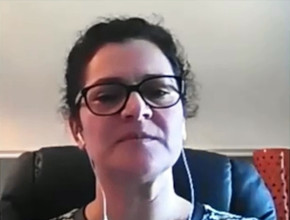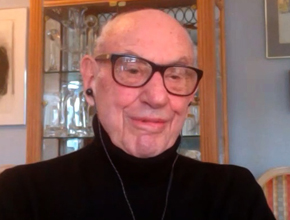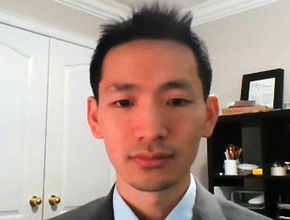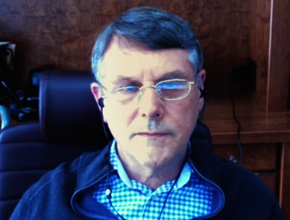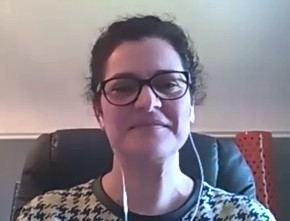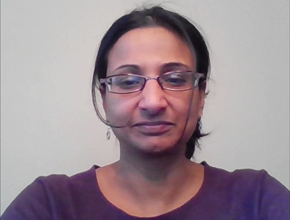References
Goldberg WM. An Internist’ Journey with Behavioural Medicine. Can J Gen Int Med. 2016;10(4):6-9. doi:10.22374/cjgim.v10i4.84.For part 1 of this interview, click here. For part 2 of this interview, click here.
This transcript has been edited for clarity and expanded.
Roman Jaeschke, MD, MSc: Dr Goldberg, if you were starting again, how would you deal with these chronic pains for which there is no clearly identifiable organic reason?
William Goldberg, MD, DSc: I would start with the basis of our work, and other people did this work, I’m sure. I think we had one of the better multidisciplinary teams that got together. And I think that the field consultant was a clue.
What I would do to start with would be another good study somewhere. I think no money has been spent on this, and that’s the one thing I found: general research money never went into this. I would start off by repeating a lot of the studies we did. We did 2 studies on chronic chest pain, chronic back pain, and the use of field consultants. And I would see if this can be verified. In our study that we had published in the American Journal of Medicine as a supplement on the chronic fatigue syndrome, I think we had a 70% success rate with patients being able to return to work. And secondly, the study with the field consultant and chronic back pain. So I think some recognition of that work should be carried out.
Roman Jaeschke: I would think it’s done by insurance companies, who may be primarily interested. They didn’t pick it up?
William Goldberg: They picked it up very much so. In fact, when our unit unfortunately had to be dissolved, the members of our unit went in and of course did work privately. And that’s how we got our first patients: from insurance companies, from lawyers, and from industry, because we could convince them that economically it was better to get somebody back to work than to have them disabled.
We also convinced the patients that—Nobody wants medical insurance. No patient wants to be disabled. That’s the biggest mistake in the world. Everybody wants to live a normal, happy life, but they’re never shown the way.
Roman Jaeschke: Maybe the last question. You started practicing medicine 70 years ago?
William Goldberg: No, I graduated 70 years ago.
Roman Jaeschke: Right. It’s close. Any reflection on what’s changed over the 7 decades?
William Goldberg: The technical and the procedural things have changed tremendously. I mean, the open heart surgery and the valves…
I might add the antibiotics have not been that successful. I worked with a chap from the University of Western Ontario who predicted that you couldn’t fool the Staphylococcus species and think that penicillin would cure it, that they were too smart. And he was so prophetic in what he was saying. All the bugs are too smart.
All the high tech has changed. What has not changed, in my humble opinion, in all the years I’ve been here is 2 things. One is that people do not handle the behavioral aspects; I hate to use the term mental health—it’s really behavior that’s unpleasant and uncomfortable. I think some of the old-timers were rather good in convincing patients to get better, and I think they got more into the high tech now [and forgot about some basics]. So that hasn’t changed.
The second thing that hasn’t changed is the way we deliver medicine. We deliver tremendously well at the tertiary level. We don’t at the primary care level because that to me is behaving just like we did 50 years ago: little groups of doctors running around, people going to emergency unnecessarily, and no chronic care beds. And that’s exactly the same problem that we had 40 years ago.
Roman Jaeschke: Little reassuring but at least we haven’t caused it. I hope our listeners will find it as fascinating as I did.
I promised that it was the last question but let me ask one more. You mentioned the concept of illness versus disease.
William Goldberg: If I break my arm, that’s a real disease or disorder. I have no problem with that. You don’t react to it because you know there’s a broken bone. The radiologist shows you the x-ray and you understand it’s going to hurt. You may take a few pills for it. You understand that they’ll put a cast on. You understand it will take 6 weeks, but your expectations are that it will get all better.
Now let’s take the patient with chronic low back pain who has seen 2 orthopedic surgeons, 3 physiotherapists, and has bought the heat pad from some agency or TV that jiggles the back. That patient’s expectations are that “I’m never going to get better.” So they avoid activity. They end up going out less, stop working, stop being active, and before you know it they’re disabled.
The difference between those two is the illness behavior. It’s not the disease, because there is no disease in one instance and there’s a broken bone in the other. The illness behavior is the difference between what you expect from the disease and what you’re actually experiencing, what you’re doing.
The other example I give—the best example I use—is a paraplegic who [despite severe illness] has relatively little or no disease behavior, as there’s no illness behavior other than that expected from his paraplegia. The person with low back pain who is totally disabled has all this illness behavior and no disease. Most patients fit between those extremes.
Roman Jaeschke: And you think that cognitive behavioral therapy that you were talking about [see A McMaster innovator. CBT decades ago] could play a role and help those people?
William Goldberg: I think it’s the only possible role, to change the behavior.
Roman Jaeschke: For a person who’s spent a lifetime as an internal medicine specialist to talk that behavior is the primary driver is quite remarkable.
Dr Goldberg, it is a real privilege to talk to you. Thank you so much. I really appreciate it.
William Goldberg: Thank you.
 English
English
 Español
Español
 українська
українська

